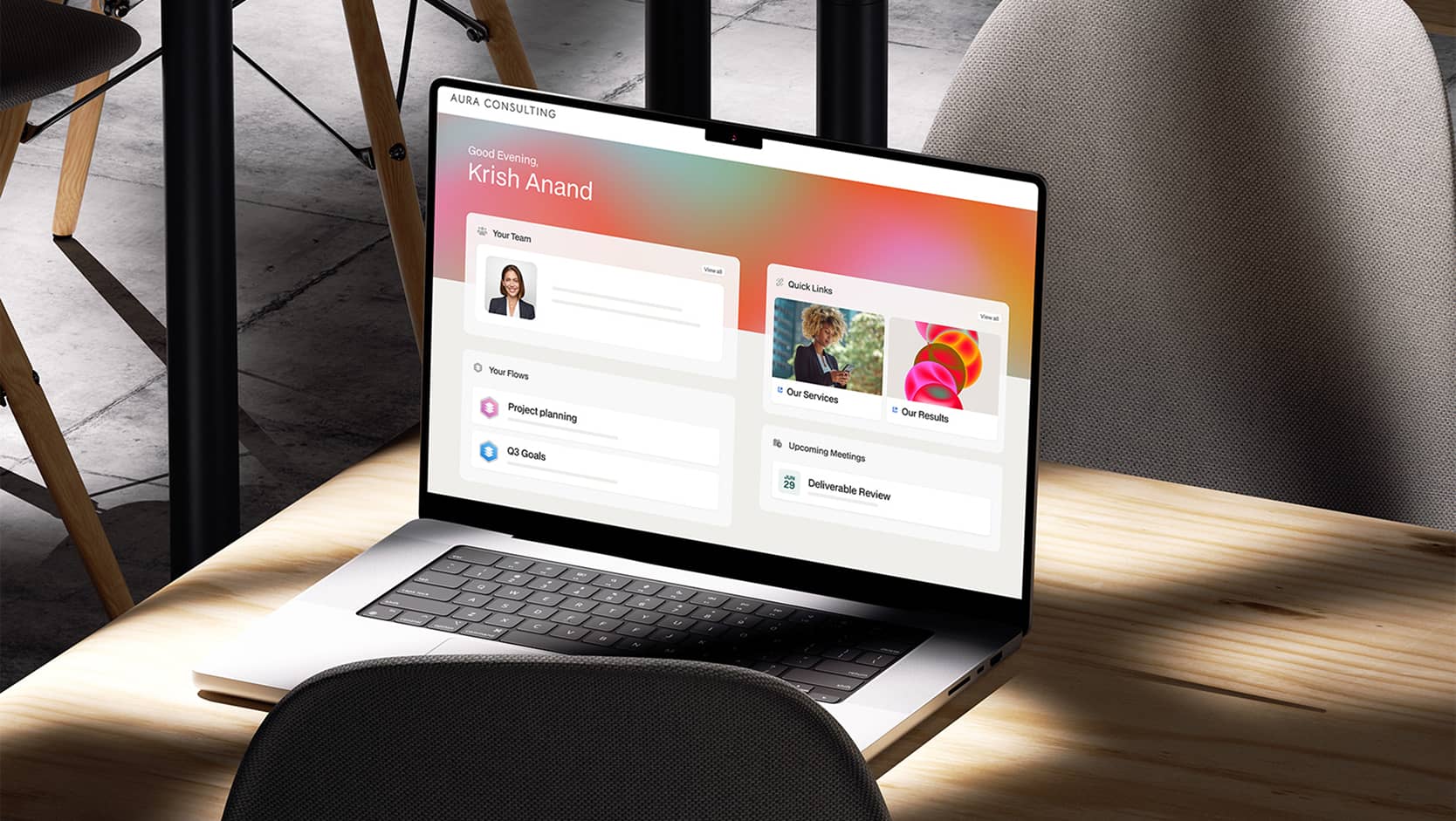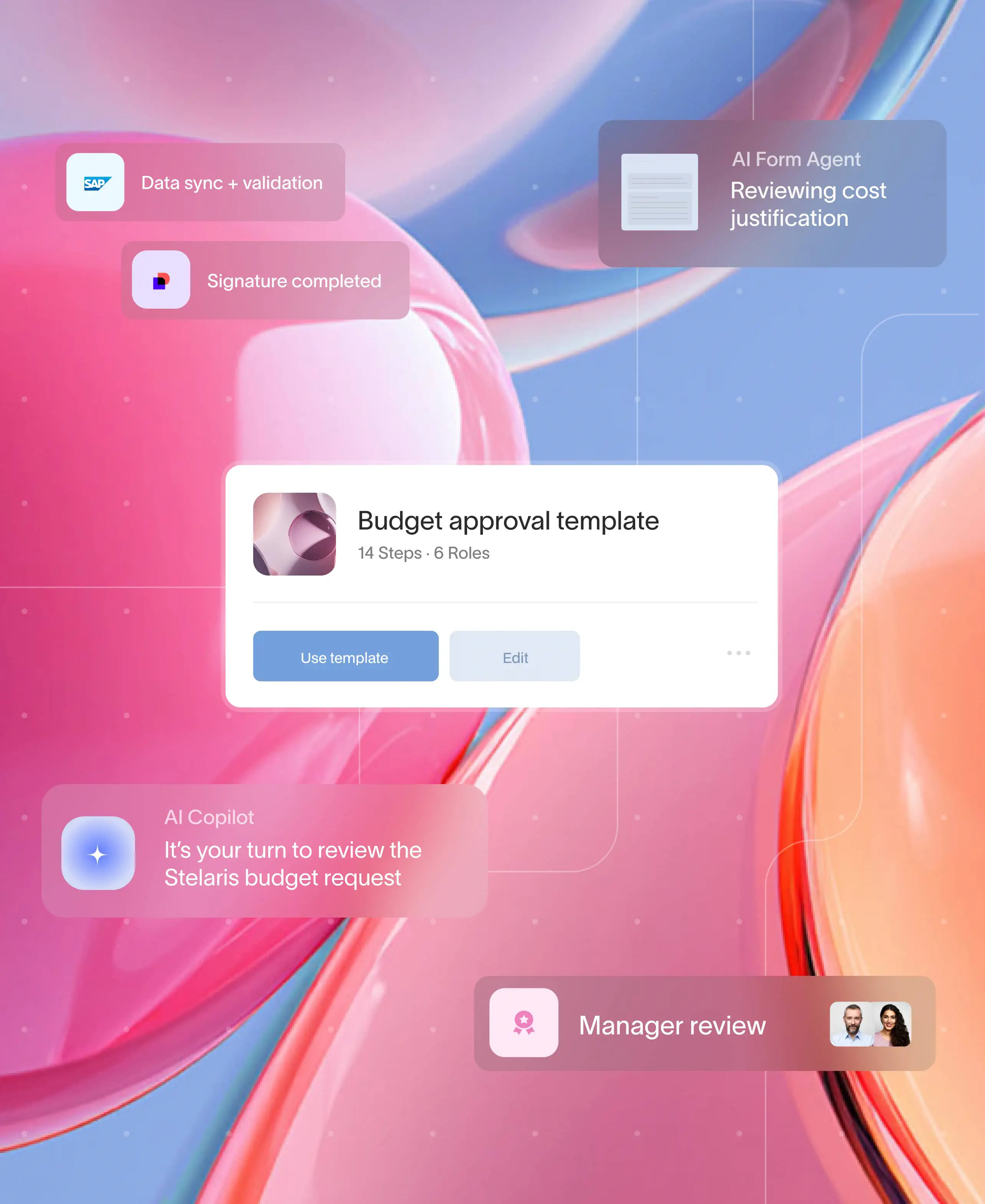
At a glance
A white-label client portal turns customer experience into revenue by consolidating all interactions into a single, secure platform that reflects your brand. This approach builds client trust, automates inefficient manual work, and provides a seamless self-service hub that directly boosts retention and profitability.
A white‑label or branded client portal does more than tidy up your tech stack. By wrapping every touchpoint in your own look‑and‑feel, it cements trust, lifts revenue, and keeps clients coming back while quietly automating the grunt work that used to burn hours. Research shows that consistent branding can raise revenue by up to 23%, and even a five‑point bump in retention can rocket profits by as much as 95%. Below, we break down exactly how white‑label portals deliver those gains, sprinkle in real‑world stats, and show where Moxo slots in without the hard sell.
The instant‑gratification problem
In an on-demand economy, your clients have zero patience for friction or delays. Relying on scattered emails and slow follow-ups is a direct threat to your retention and revenue. How many times did you chase a client for feedback last week? Too many. In an always‑on economy, 59% of customers will bolt after a string of clunky interactions and 17 percent after just one. Email threads and generic file‑share links scream “vendor”, not “partner”. The fix is a single, branded hub that feels like your firm’s own app.
Why branding consistency builds trust
Humans love shortcuts. Seeing the same colors, logo, and tone across every screen tells the subconscious, “these folks have it together.” That emotional nudge translates into hard numbers:
Familiarity breeds revenue: Consistent presentation lifts topline by 23–33%.
Experience beats price: 88% of CX pros say quality and experience, not cost now drive loyalty.
Retail proof‑point: 63% of shoppers stay loyal to brands that deliver seamless branded experiences.
A white‑label portal keeps that visual and experiential thread unbroken, from first proposal to renewal.
Under the hood: How a white-label portal puts your brand in the spotlight
Think of it as your private, log‑in‑only command center. The platform vendor stays invisible; your logo, palette, and domain shine. Clients chat, sign, upload, and track progress inside an experience that feels “built in‑house.” A portal bears the agency’s branding while giving clients a central place for updates and tools.
Core wins
Brand reinforcement: Every login is a micro‑ad for your firm.
Self‑service freedom: 78% of users prefer to handle tasks on mobile. Portals satisfy that itch instantly.
Audit‑ready trails: Every approval is timestamped, saving compliance headaches later.
Metrics to prove impact
Executives will ask for numbers. Be ready with these five:
Activation rate: logins ÷ invitations sent. Anything above 70% signals strong branding resonance.
Task completion time: median hours from request to sign‑off. Automation routinely trims this by 60‑plus percent.
Support tickets per client: should drop as self‑service rises; 78% of users prefer mobile portals, so keep an eye on device analytics.
Net promoter score: measure before and three months after launch. Buyers will pay a premium of up to 18 percent for standout experiences.
Churn rate: track quarterly. Even a five‑point retention gain can spike profits 25–95%.
Implementation roadmap
Rolling out a branded portal is less “rip‑and‑replace,” more “plug‑and‑polish.” Follow these four sprints and you’ll be live in weeks, not quarters.
- Map the end‑to‑end journey: White‑board every client touch: from first contract to renewal and flag hand‑offs that still rely on email or spreadsheets. Most firms find 63% of service hours vanish into manual follow‑ups that a portal can automate.
- Prototype the look‑and‑feel: Drop your colors, fonts, and favicon into a staging site. Consistent presentation can lift revenue by up to 23%, so sweat the hex codes.
- Connect the data pipes: Use REST or Zapier‑style connectors to sync CRM, e‑signature, and payment tools. Ninety‑five percent of businesses have seen a spike in self‑service requests, so the fewer extra logins, the better.
- Launch in cohorts: Start with a control group of high‑engagement clients, gather feedback, then roll out to the rest. Firms that iterate in 30‑day sprints cut onboarding timelines by up to five days.
Security and compliance essentials
Trust evaporates the moment a PDF lands in the wrong inbox. White‑label portals fix that by centralizing files behind SSO, granular permissions, and end‑to‑end encryption. Platforms like Moxo log every view and e‑signature, satisfying auditors without extra plugins. Clients also feel the difference. 86% of buyers will pay more for companies that keep data safe and experiences friction‑free.
Key checkpoints before go‑live:
Role‑based access: restrict folders by team and client.
Data residency controls: align with GDPR or HIPAA as needed.
Pen‑test reports: request them yearly; regulators increasingly ask for proof during audits.
Retention gains you can bank on
Why obsess over retention? Because the math is wild:
Profit amplifier: +5 percent retention → +25–95% profit.
Acquisition drag: It still costs roughly 5× more to land a new customer than keep an existing one.
Subscription stickiness: 18% of consumers now subscribe to services they love, locking in loyalty.
A branded portal feeds this loop. Clients log in, feel at home, and renew without shopping around.
The retention payoff: how a portal builds loyalty
Reduces 'friction churn': A portal eliminates the small, daily frustrations, such as excessive email follow-ups, that are a leading cause of client churn. It replaces a chaotic process with a smooth, professional experience that shows you value their time. This has a direct impact on customer satisfaction.
Frees up time for relationships: By cutting administrative workload by over 63%, your team can shift from reactive chasing to proactive relationship management, making clients feel supported and prioritized.
Builds a 'sticky' digital home: A centralized and branded hub becomes an indispensable tool for your clients, giving them a compelling reason to stay and making it much harder for competitors to lure them away.
Delivers profitable loyalty: This enhanced client experience is a powerful retention engine. When clients stay longer, it directly impacts the bottom line, with studies showing that even a minor lift in retention can boost profitability by 25-95%.
Customer story highlights
BNP Paribas: Halved onboarding time by unifying messaging, e‑signatures, and docs in a branded MyWealth portal. Clients never saw a third‑party logo.
Salty Air Living: Went from drowning in paperwork to handling 5× more property deals after rolling out a white‑labeled hub for approvals and disclosures.
1852 Media: Each account manager now juggles 30 percent more clients thanks to automated creative sign‑offs inside their portal.
How Moxo fits
Moxo’s white‑labeled client portal gives you the toolkit minus the heavy code lift.
Workflow builder: Drag‑and‑drop onboarding or approval flows so clients know exactly what happens next.
Approval engine: Multi‑step, role‑based sign‑offs fire automatically, killing the “Did you get my email?” loop.
Intelligent alerts: Smart reminders chase docs so you don’t have to.
Audit trails & compliance: Every click, comment, and signature is logged. A crucial requirement for finance, legal, and healthcare firms.
BNP Paribas used these features to centralize KYC and slice onboarding in half.
Conclusion
Branding is more than a logo; it’s the silent handshake that tells clients they can trust you. A white‑label portal makes that handshake digital and sticky. By wrapping everyday tasks in your identity, you reduce churn, raise revenue, and win back the hours that used to vanish into email purgatory. In plain English: stop juggling apps, start owning the experience.
Book a personalized demo and see your own logo in the portal within minutes.
FAQs
What is the difference between a client portal and a white‑label client portal?
A standard portal shows the software provider’s branding; a white‑label portal swaps every logo, color, and URL for your own, so clients perceive it as your proprietary tool.
Can a branded portal integrate with my CRM?
Yes. Moxo and most leading platforms offer REST APIs and native connectors for popular CRMs, ERPs, and payment gateways, so data flows seamlessly.
Is a portal only useful for large enterprises?
No. SMBs see gains, too, the 1.7 billion‑dollar portal market is 77% cloud‑based, making entry costs low.
Will clients actually use another login?
Portal adoption climbs when it delivers real value. Remember, 78 percent of users prefer mobile self‑service, and frustration with channel hopping is a top churn trigger.
How fast can I launch?
With Moxo’s template library, many firms spin up a branded space in under a day. No deep code required. Need a jump‑start? Grab the free Client Onboarding Best Practices Guide for step‑by‑step checklists.





